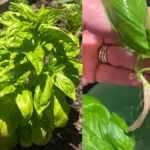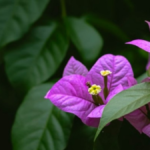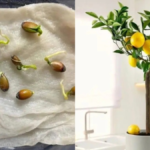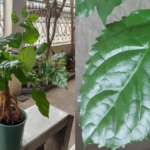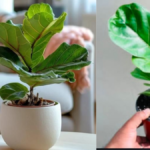Succulent Plant Care Guide: Succulent plants are super easy to take care of. They don’t need much water—just wait until the soil is fully dry before watering again. Place them in a bright spot with some indirect sunlight, and use soil that drains well. They don’t like too much moisture or humidity. A little bit of fertilizer in summer helps them grow better. With these simple steps, your succulents will stay healthy and happy, whether you keep them indoors or outside.
I’ve been gardening for years and have taken care of many plants, especially succulents. Over time, I’ve learned how to help them grow well with simple care. Let me share these easy tips with you. Read more in details
IN THIS ARTICLE
About Succulent Plants
Succulent plants are special because they store water in their thick leaves and stems. This helps them stay alive even when there’s very little water. That’s why they’re great for people who want low-maintenance plants.
- Common types are Aloe Vera, Jade Plant, Echeveria, Haworthia, and Sedum.
- They are perfect for home decoration, small spaces, and even office desks.
- Succulents help clean the air and bring a calm, green vibe to any room.
Even if you’re new to gardening, succulents are a great place to start. They’re tough, beautiful, and very easy to grow.
Succulent Plant Care Guide – Quick Tips
- Use well-draining soil so water doesn’t sit in the pot.
- Water only when the soil feels completely dry.
- Place in bright but indirect sunlight.
- Keep them in dry air and avoid humid places.
- Feed lightly during spring and summer.
- You can easily grow new plants from leaves or cuttings.
- Look out for small issues and fix them early.
Watering Succulent Plants
Succulents don’t like too much water. Their thick leaves already store moisture, so watering too often can hurt them.
- Wait until the top 2 inches of soil feel dry.
- Use the “soak and dry” method: water fully and then wait until the soil dries out before watering again.
- Avoid spraying water directly on the leaves, especially in winter.
Tip: In cold or humid weather, water once every 2 to 3 weeks. If the leaves look wrinkled, it’s a sign they need water.
Best Soil for Succulents
Succulents need soil that drains quickly. Regular garden soil holds too much water and can cause root rot.
- Use store-bought succulent or cactus soil.
- Or make your own by mixing: 2 parts potting soil + 1 part sand + 1 part perlite.
- Avoid heavy soil that stays wet for too long.
Simple Tip: Put small stones at the bottom of the pot to help extra water flow out easily.
Sunlight Needs for Succulents
Succulents love light but too much sun can burn them. Give them the right kind of light to help them grow strong and healthy.
- Keep them near a bright window, especially a south-facing one.
- If outdoors, let them get morning sunlight and afternoon shade.
- Turn the pot every week so all sides get even light.
Look Out: If your plant starts growing tall and thin, it needs more sunlight.
Humidity and Temperature Requirements
Succulents come from dry places and like warm, dry air. Try to keep their environment like their natural home.
- Best temperature: 60°F to 80°F (15°C to 27°C).
- Keep away from cold wind, AC, and heaters.
- Avoid rooms with high humidity like bathrooms or kitchens.
Humidity Tip: Open windows for fresh air or use a small fan if your room is very humid.
Fertilizing Succulents
Succulents don’t need much food, but a little can help them grow better during spring and summer.
- Use a mild liquid fertilizer, mix it with water, and give once every month.
- Don’t fertilize in winter.
- Natural options like compost tea are also good in small amounts.
Note: Too much fertilizer can harm the plant. Always use less than the amount written on the packet.
How to Propagate Succulents
You can grow new succulents easily from a leaf or a small cutting. This is a fun and budget-friendly way to get more plants.
- Gently take a healthy leaf or stem.
- Let it dry for 1-2 days until the cut part forms a dry layer.
- Place it on dry soil (don’t bury it).
- Spray a little water every few days until roots grow.
- Move it to a small pot once it starts growing.
Fun Fact: Some succulents grow baby plants, or “pups,” around their base—these can be replanted too.
Common Problems and Solutions
If something doesn’t look right, don’t worry. Most problems can be fixed easily.
| Problem | Cause | Solution |
|---|---|---|
| Mushy yellow leaves | Too much water | Water less and ensure proper drainage |
| Wrinkled leaves | Too little water | Water deeply, then wait for soil to dry |
| Tall, thin growth | Not enough sunlight | Move to a brighter location |
| White bugs or mold | Mealybugs or excess moisture | Wipe with neem oil or rubbing alcohol |
| Dropping leaves | Sudden weather change | Keep in a stable spot and water gently |
Always check the leaves. They will tell you how the plant feels.
FAQ – Succulent Plant Care
How often should I water my succulent?
Only when the soil is completely dry—usually every 1–2 weeks
What kind of soil is best for succulents?
Use well-draining cactus or succulent soil.
Why are my succulent leaves falling off?
It could be overwatering or sudden changes in temperature.
Conclusion: Succulent Plant Care Guide
Taking care of succulents is simple and rewarding. By giving the right amount of water, light, soil, air, and food, you can keep your plants happy and healthy. With a little attention and love
Read More

